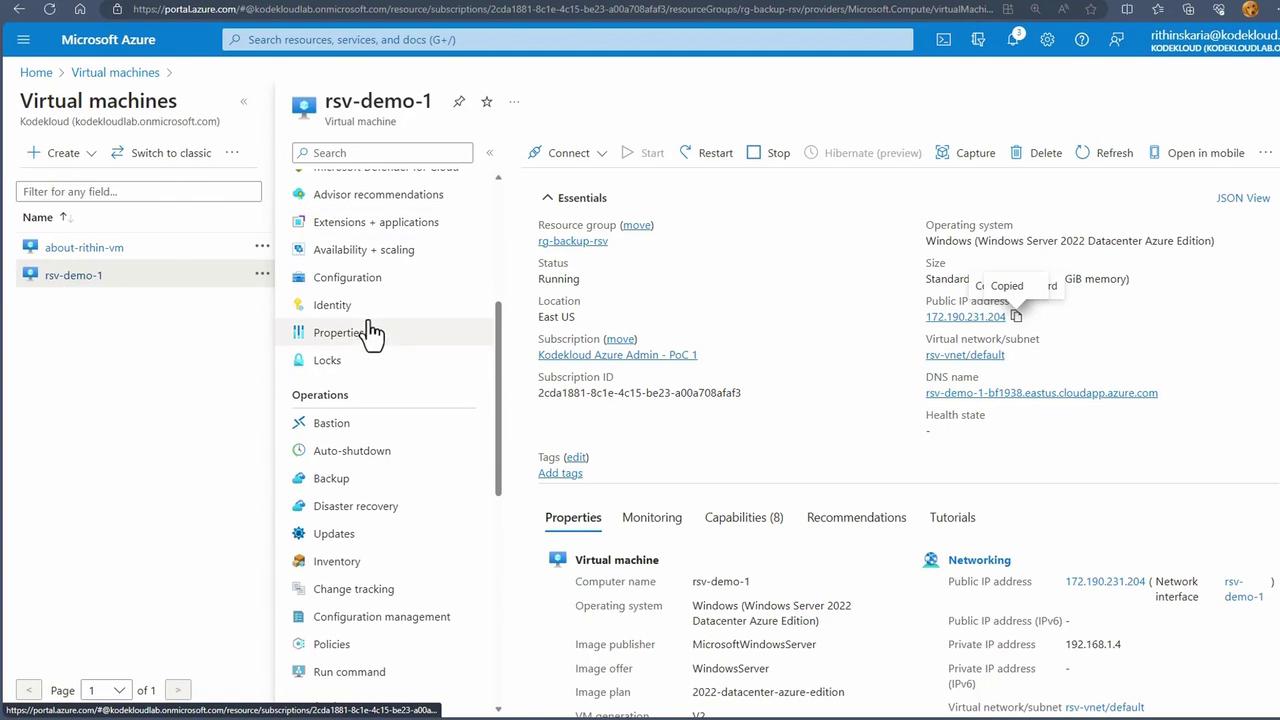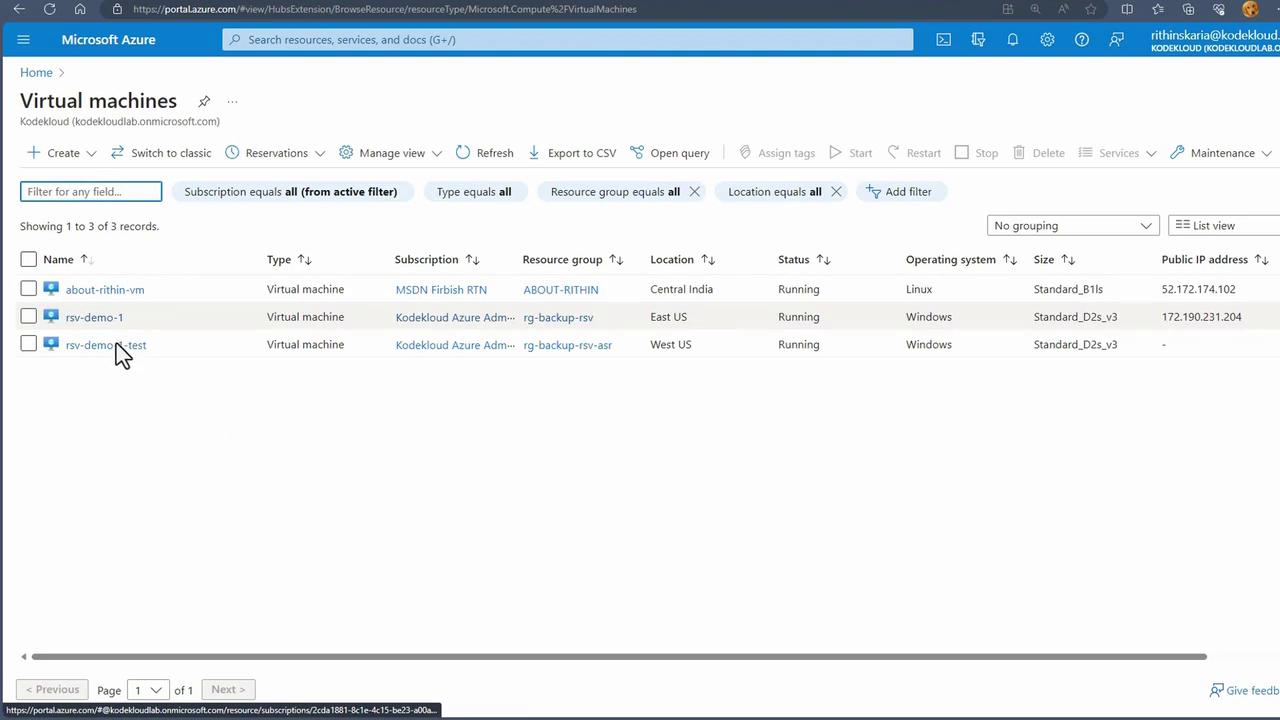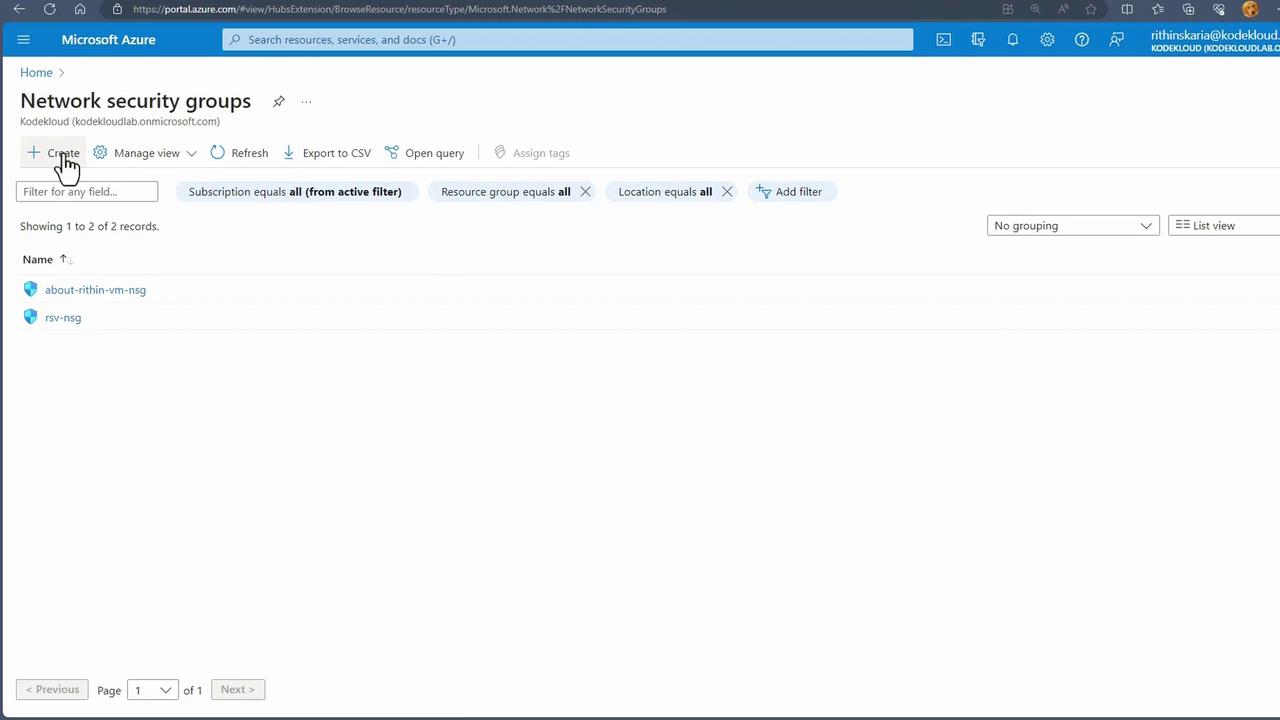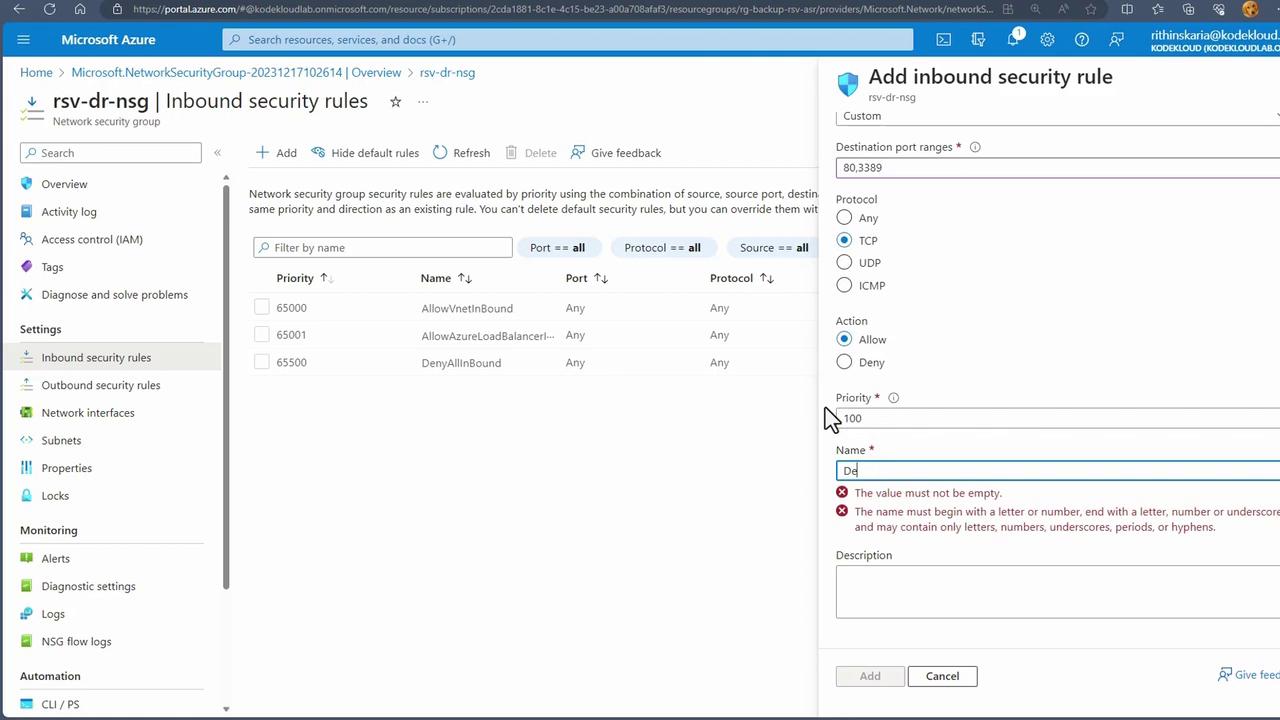[Updated] AZ-104: Microsoft Azure Administrator
Administer Data Protection
Azure Site Recovery
Azure Site Recovery (ASR) ensures uninterrupted business operations by replicating your virtual machine workloads to a secondary location in the event of a disaster. In this guide, you will learn how to set up disaster recovery for a single VM using ASR, along with how to perform a test failover to validate your configuration.
Consider a scenario where your primary source environment is in Region A. In this region, virtual machines operate within an availability set and use a virtual network (VNet). When these machines are enrolled in Azure Site Recovery, an extension is installed on each machine and a cache storage account is created in Region A to temporarily hold replication data. The target environment in Region B is configured with the necessary infrastructure components—including a VNet, subnet, and availability set.
Data is replicated from the source cache storage account to managed disks in Region B. During a primary site failure, new virtual machine instances are provisioned in the secondary region, and the replicated managed disks are attached. This ensures the machine continues to function in Region B with the complete data set from Region A.

Note
ASR not only facilitates disaster recovery but can also be automated using REST APIs, health metrics, and load balancing solutions such as Azure Traffic Manager.
Configuring Disaster Recovery via the Azure Portal
In this section, we walk through configuring disaster recovery for a virtual machine named "RSV Demo 1" running IIS on a Windows server.
Access the Virtual Machine Details
Open the virtual machine details page in the Azure portal.

Initiate Disaster Recovery Setup
Click on the disaster recovery option. You can create a Recovery Services vault during this process. For this demonstration, review the disaster recovery map and settings.

Select the Target Region
Choose a target region—for example, West US if the source is located in East US. In the advanced settings, Azure creates the necessary infrastructure (resource groups, virtual networks, and availability sets) in the target region. The target resource group may be annotated with an "ASR" suffix (e.g., "RG Backup RSV ASR").

Review and Configure Replication Settings
Examine the storage options, replication settings, and extension management. Storage settings define the cache storage account. Replication options let you choose the recovery services vault, vault resource group, and replication policy. Extension settings manage the ASR extension on the virtual machine.

Start Replication
Click "Review and Start Replication" to see details such as the source disk, replica disk (configured as premium SSD), and cache storage account. Confirm by clicking "Start Replication" to trigger the creation of resources in West US. The replication of data to the target region will commence once the resources are provisioned.
After the replication process completes, you can monitor key metrics like the Recovery Point Objective (RPO), replication health, and details of the underlying infrastructure.

If you have not yet performed a test failover, continue to the next section.
Performing a Test Failover
Conducting a test failover validates that your disaster recovery setup functions correctly without affecting your production environment.
Initiate the Test Failover
In the Azure portal, select the test failover option.

Configure Test Failover Settings
- Choose the source region (e.g., East US) and the destination (e.g., West US).
- Select the appropriate recovery point; typically, the latest recovery point with application consistency is recommended.
- Pick the ASR virtual network that was created during the initial setup.
Provisioning a Temporary Virtual Machine
The test failover process creates a temporary virtual machine in the target region, attaching the relevant managed disk. To ensure connectivity, a public IP address must be available. Since this is not created automatically, you need to create a new public IP.

Create a public IP (e.g., "RSVDRVMIP") in your ASR resource group and allow the test failover process to continue.
Verify the Test VM Deployment
After the virtual machine starts, monitor its status in the virtual machines list.

Set Up Network Connectivity
If no Network Security Group (NSG) is attached to the test VM, proceed as follows:
- Create an NSG in the ASR resource group.
- Add inbound security rules for required ports (e.g., TCP ports 80 and 3389).

Next, configure the inbound security rules.

Then add the inbound security rules.

Associate NSG and Public IP
Associate the NSG with the DR subnet so that any VM in the subnet inherits the security rules.

Finally, associate the newly created public IP address with the test VM's network interface.

Verify the Test Failover
Access the public IP address via a browser. If you see the IIS page (identical to production), the test failover is confirmed successful.
Test Failover Tip
A test failover does not impact your production environment. It enables you to validate that all systems, from network connectivity to replication accuracy, are functioning as expected.
Completing the Disaster Recovery Test
After a successful test failover, it is essential to clean up the test environment:
- Navigate to the replicated items in the Azure portal.
- Select "Clean Up Test Failover Pending" to remove the test configurations.
- Confirm by deleting the test virtual machine when prompted.

Following cleanup, if a full production failover is required, the option will be available once the test process is complete. A full failover permanently transfers workloads to the disaster recovery region. When the primary region is restored, you can reverse the process by re-synchronizing and committing the changes to switch back to the primary region.
Other advanced features of ASR include recovery plans, automation, and integration with Azure Traffic Manager. However, mastering the failover process is key for certification and ensuring business continuity.
This concludes our lesson on setting up and testing Azure Site Recovery for robust disaster recovery and business continuity in Microsoft Azure.
Watch Video
Watch video content